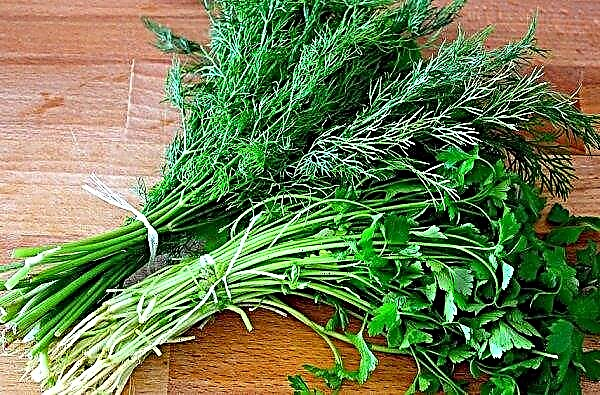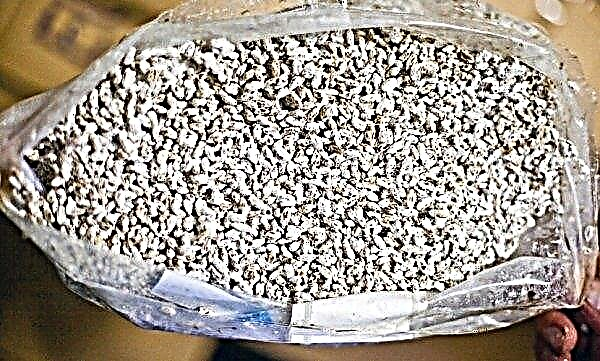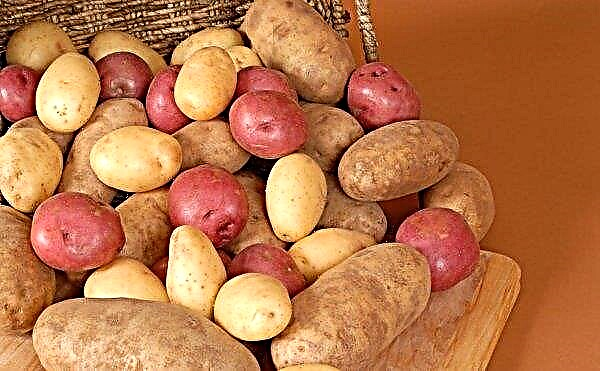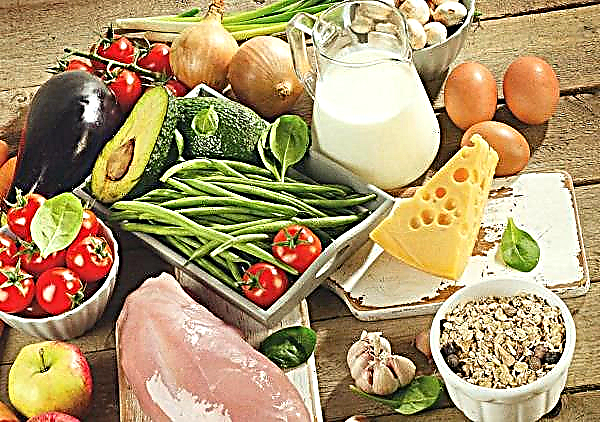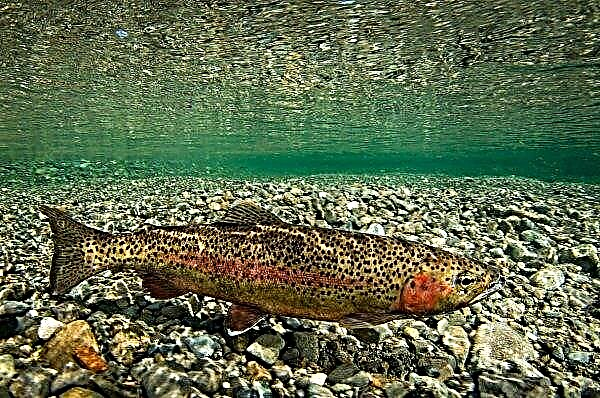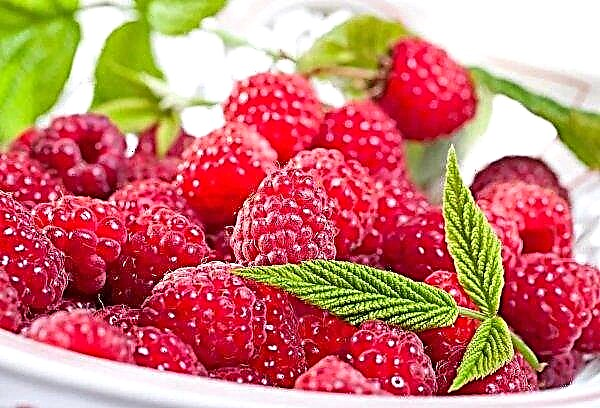The farmers who cultivated the Garland cucumbers greatly praise this variety. The name fully justifies itself - the stems, like real garlands, are dotted with neat greenery. On the important characteristics of the variety and the features of its cultivation, read further in the article.
Characteristics of the variety of cucumbers Garland
Cucumbers Garland F1 - a hybrid bred by Russian breeders. In 2010, it was entered in the State Register. The Gavrish company and the Research Institute of Vegetable Production of Protected Ground worked on the development of the variety. This hybrid is intended for indoor cultivation, and in open beds it is grown only in regions with a warm climate. Garland cucumbers are characterized by high productivity and resistance to a large number of diseases, because of this, the culture is popular among professional farmers and summer residents.
This hybrid is intended for indoor cultivation, and in open beds it is grown only in regions with a warm climate. Garland cucumbers are characterized by high productivity and resistance to a large number of diseases, because of this, the culture is popular among professional farmers and summer residents.
Did you know? Breeders from the UAE brought square cucumbers. They are convenient to transport and store, while the taste of the fruit does not differ from that known to most.
Features of growth and flowering
The variety belongs to early ripening. Fruits fully ripen in 45–50 days from the appearance of the first sprouts. The lashes are vigorous, but weakly branched. The plant grows well in partial shade. Pollination of parthenocarpic type. In 1 node, 4–5 ovaries are formed. The result of fruiting is dark green cylindrical fruits. The skin is strong, with tubercles. The average weight of one cucumber is 110 g, its length is 12-14 cm. The variety has good taste. Garlic cucumbers are used in all possible variations - in salads, pickled, pickled, pickled.
Variety Productivity
Cucumbers Garland belong to the high-yielding varieties. From 1 m² of plants, gardeners remove 14–16 kg of ripe fruit.
Advantages and disadvantages of cucumbers Garland
- This variety has a large list of advantages:
- early ripening;
- self-pollination;
- shade tolerance;
- the ability to grow a culture in an apartment environment;
- unpretentiousness in leaving;
- resistance to common diseases;
- high productivity;
- fruit keeping and transportability.
- Among the shortcomings can be called these:
- obligatory formation of lashes;
- the need for tying;
- crop damage due to irregular fruit collection.
Optimal landing times
Planting dates depend on what method of cultivation the gardener chose.
- Reckless way. Seeds can be sown open ground in late May - early June, if the soil at this point warmed up to + 15 ° C.
- Seedling method. Seeds for seedlings are sown in April, near the end of the month.
Did you know? The largest cucumber in the world was raised by Brit Alf Cobb. Its vegetable grew in length by 91.5 cm.
Planting and growing varieties
The grade is recommended for film-type greenhouses. Also, garland cucumbers are successfully cultivated by citizens on balconies and loggias. As mentioned above, these vegetables can be grown both by sowing seeds on the bed, and from seedlings. Each type of landing has its advantages and disadvantages.
Seed directly into the ground
When growing cucumbers by seedlings, the seeds are sown immediately in the soil. The undeniable advantage of the method is that you do not need to spend time and effort on growing seedlings. However, it is likely that the seeds will not grow. In this regard, the seedless method is inferior to the seedling method, where seedlings have already grown and root without any problems. In addition, cucumbers will begin to ripen later than when planting seedlings. The quality of the crop is affected by the choice of place for sowing. Seeds are best sown in non-acidic loamy or loamy soil. Do not forget about crop rotation.
In addition, cucumbers will begin to ripen later than when planting seedlings. The quality of the crop is affected by the choice of place for sowing. Seeds are best sown in non-acidic loamy or loamy soil. Do not forget about crop rotation.
- Good predecessors of cucumbers are:
- white and cauliflower;
- bow;
- garlic;
- peas;
- beans;
- Beans
- corn.
Before planting, prepare the soil in the greenhouse: dig the soil and apply organic fertilizers. Perfectly rotted manure is calculated at the rate of 20-30 liters per 1 m² of land. Dig holes 0.3 m apart. Keep a distance of 0.7 m between rows. Seeds should be sown to a depth of 2-4 cm.
Important! At temperatures below 0 ° C, cucumbers soften and quickly deteriorate. Do not freeze these vegetables and do not store them close to the freezer.
Growing seedlings
Seedling method is more suitable for Garland cucumbers than seedling - seedlings are already sprouted and ready to plant in the ground, quickly root and produce fruit. The relative disadvantage of the method is the complexity and time spent. Seeds for seedlings are best sown in peat tablets. This is a ready-made disinfected soil that promotes the growth of seedlings. The tablets must be placed in containers and filled with water. Seeds can be planted when they absorb water - this will happen in 15 minutes. You should place the seeds in the recesses in the tablets, and after sowing, move the tablets to a common box, close it with plastic wrap and leave it in a dark place. Periodically, you need to spray the substrate from the spray gun. When the seedlings sprout, the film can be cleaned for a day, as well as continue to spray the substrate. The grown seedlings are moved to a permanent place in late spring or early summer. They are also planted according to the scheme: 0.7 m between rows and 0.3 m between holes.
You should place the seeds in the recesses in the tablets, and after sowing, move the tablets to a common box, close it with plastic wrap and leave it in a dark place. Periodically, you need to spray the substrate from the spray gun. When the seedlings sprout, the film can be cleaned for a day, as well as continue to spray the substrate. The grown seedlings are moved to a permanent place in late spring or early summer. They are also planted according to the scheme: 0.7 m between rows and 0.3 m between holes.
Variety Care Features
In order for the crop to bear fruit well, plantations must be looked after. Bushes should be regularly watered, fertilized, shaped and tied. Soil care is also important - loosening, weeding and mulching.
Important! When watering cucumbers, sprinkling should be avoided - burns may appear on drops of water on the leaves.
Watering and fertilizing
Important factors in the growth of plantations are watering and top dressing. Cucumber is a moisture-loving plant. The frequency and amount of moisture depends on the growth stage:
- before flowering, add 4 l of water under 1 bush once every 3-5 days;
- after flowering, especially during the period of fruit formation, pour 8 liters of water under 1 bush once every 2 days.
Water should be used warm and settled. The culture is watered by the drip method or by irrigating the soil under the root. The best time of day for watering is when the sun has just risen because it has already set. Cucumbers are fertilized with liquid means, introducing them into the soil.
The feeding scheme during the growing season is as follows:
- 14 days after transplanting the seedlings into the greenhouse: dilute 1 tablespoon of potassium sulfate, superphosphate and ammonium nitrate in 10 liters of water. Under each bush make 0.5 l of the solution.
- At the time of bud opening: dilute 1 liter of chicken droppings in 15 liters of water. Fertilize each bush with 0.5 l of the product.
- At the beginning of fruiting: in 10 liters of water add 200 ml of ash, 1 tbsp. l potassium nitrate and 2 tbsp. urea. Stir and pour 0.5 l of the drug under each bush.
- 2 weeks after the start of fruiting: repeat the previous top dressing.
Garter and bush formation
When growing cucumbers, thickening of plantings should not be allowed - in dense plantations, individual bushes do not receive enough moisture and fertilizing. For better lash growth, garter and shaping are required. Shoots should be allowed to grow upward. To do this, they must be tied to a trellis or net. It is necessary to form plantings in 1 stalk. In this case, the side shoots should be removed, and the ovaries in the sinuses of the first 4 leaves should be blinded.
Soil care
After each watering, the soil must be loosened. Along with this, it is convenient to remove weeds from the soil. So that the soil remains wet longer and the weeds on the beds do not grow, the soil should be mulched. To do this, ridges are covered with leaves, dry grass or coniferous branches.
Possible difficulties in growing varieties
The main advantage of Garland cucumbers is their resistance to diseases. Bushes are not affected by such ailments:
However, some diseases are still dangerous for plantations. Often gray rot is harmful to the whips. Among the causes of this disease are moisture congestion, lack of ventilation, cold, dense plantings. Symptoms of the disease - gray putrid spots on different parts of the bush. If symptoms are found, remove the affected parts, and treat healthy whips with copper sulfate.
Cucumbers are also very harmful to parasites. The most common are:
- Spider mite. When attacked by a pest, a thin spider-like plaque appears on the leaves. Remove it with a soapy solution, and treat the plants with the Fitoverm insecticide.

- Whitefly. White insects up to 2 mm long attach to the leaves and suck out the juices. In addition to insects, a plaque remains on the green part of the plant, which attracts fungal infections. Remove pests manually using a soap solution, and to completely remove the pest, treat the plantings with Actellik or Intavir.

To prevent the appearance of fungi, bacteria or parasites, pay attention to preventative measures:
- irrigate the soil with cold water;
- watch the microclimate in the greenhouse;
- ventilate the room;
- cut bushes so that the plantings are not dense;
- monitor the condition of the soil, loosen and weed the beds in time;
- timely note plaque, rot and insects, apply treatment on time.
Features of harvesting and storage of crops
The first crop of the hybrid Garland F1 ripens by the end of June. Fruiting continues until August. Productivity is high, so the fruits need to be harvested daily. If you leave ripened fruits on the lashes for a long time, they will ripen, and new ovaries will not form. Store cucumbers in the refrigerator. At a temperature of 0 ... + 4 ° C, the fruits will be stored for up to 1 month. Hybrid Garland does not need special care, but at the same time it has a good yield. Follow agricultural standards of cultivation, pick ripe fruits on time - and you will definitely want to grow the variety next year.



